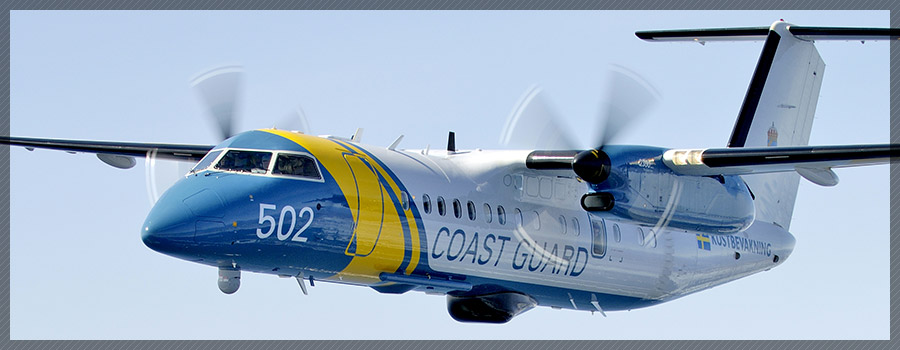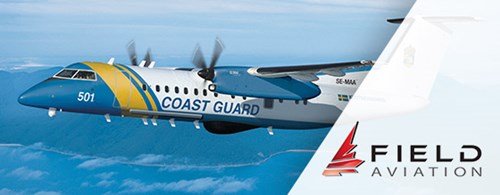The Swedish Coastguard's program to replace its aging fleet of CASA 212 surveillance aircraft started with the Swedish government setting out the nation's priorities for maritime protection and enforcement - and the Swedish Coast Guard, assisted by the Swedish Defence Materiel Administration (FMV), creating the framework for a technical requirement for airborne systems that would provide capacity and capability to meet national objectives.

Following a period of request for information from the aviation industry, the tender for the new aircraft system, project KBV 501, was released in December 2003. The tender document set out the Coastguard's requirements in great detail, using best value as the overriding principle and letting the bidders know up front the total budget that had been allocated by the Swedish Parliament.
For this project, Field Aviation teamed up with Bombardier to provide the basic aircraft and with L-3/IS to provide the mission system, drawing on each of these partners' experience when optimizing the solution. This proved to be a very effective approach, and after a thorough evaluation process by FMV and SCG, the Dash 8 Series 300 MSA from Field Aviation was declared the winner in all value categories, and a contract was awarded in December 2004.
While the aircraft for the SCG would be developed from the successful baseline of earlier Dash 8 MSA modifications, a number of "firsts" were required in order to meet the customer's requirements. These included: side-looking Airborne Radar (SLAR) in addition to the main search radar to enable simultaneous mapping of an oil spill and tracking vessels; IR/UV scanner for estimating the thickness and, thus, the volume of an oil spill; air drop capability, both for life rafts via the aircraft's Air Operable Cargo Door and for flares and buoys via a separate drop tube. Being able to run the entire mission system on the ground before starting engines necessitated upgrades to the electrical supply from the APU, while a 3rd aircraft battery was introduced to provide uninterrupted power supply protection for the Mission Management System.
A good work environment for all mission members, flight crew as well as system operators and observers, is very important if crew vigilance and mission effectiveness are to be maintained during long operations. Meeting the SCG's strict limits for noise was achieved by relocating components for the Dash 8's unique Active Noise and Vibration Cancelling System. As part of the cabin modification, hot air from electronic equipment was carefully ducted to avoid temperature gradients in the cabin, and ergonomic design of operator consoles and seats gave excellent man-machine interface.
The SCG's aircraft are fitted with 3 identical operator consoles, the intent being that 2 consoles allow for sharing the operator workload, while the third allows for training etc. There are 2 dedicated observer stations with large conformal visual observation windows, provisions for a stretcher, and a 4-person crew rest area with club seating.
All 3 MSAs were delivered to the Swedish Coastguard in 2008 and have been an outstanding success for the operator, not only in meeting the national objectives that gave rise to the project, but also in international operations where the SCG is now able to provide vital maritime surveillance for EU and UN agencies.

